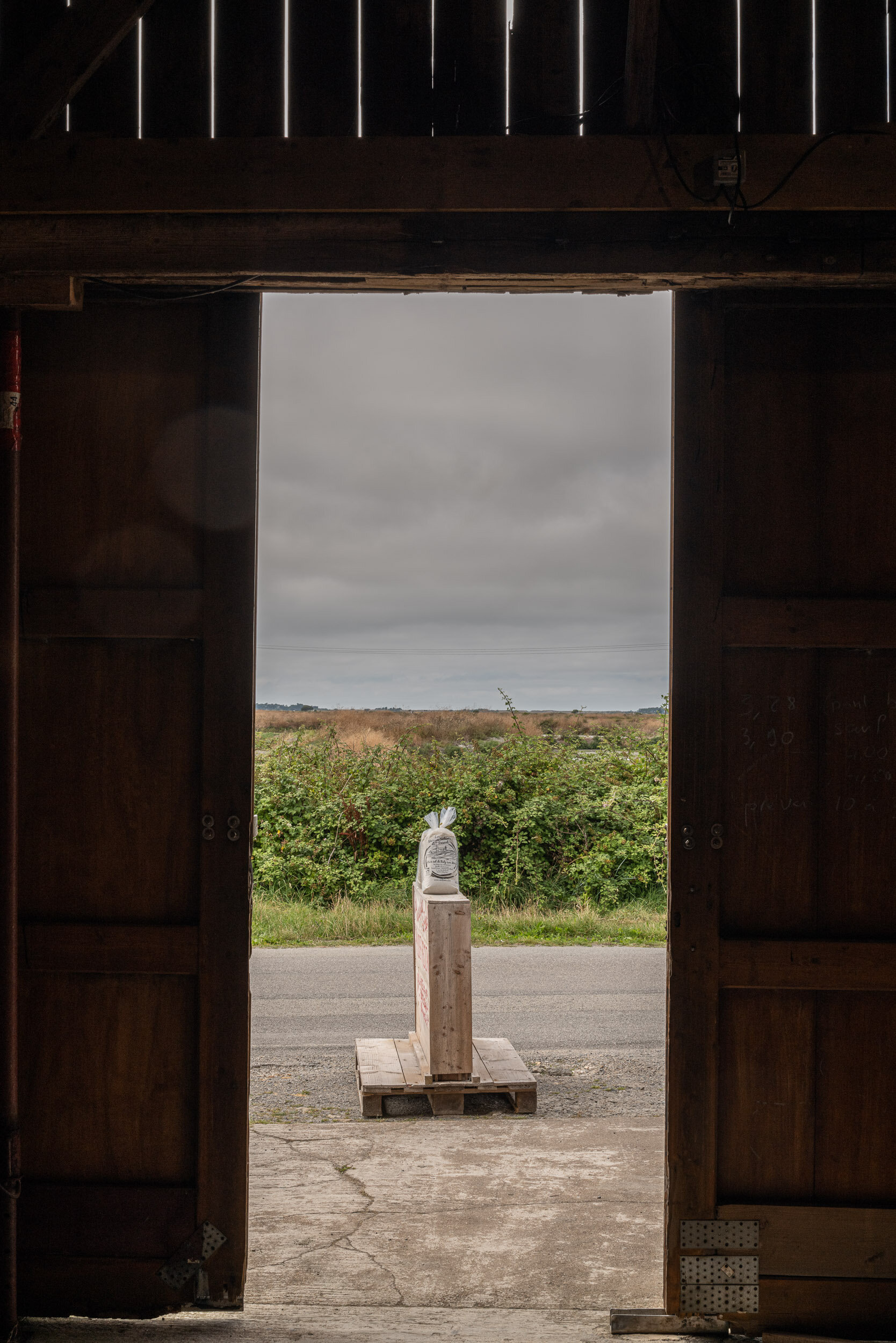Le sel de Guérande
The salt of the sea
They are all freedom-loving. And a few anarchists. The salt farmers of Guérande in northwest France. Salt used to be white gold. And so it is not surprising that the beginnings of salt production in Brittany go back to the Neolithic period. The salt gardens of Guérande, which cover around 2,000 hectares, are the largest of their kind. Around 300 salt farmers, who are called “paludiers” here (derived from the Latin word “palus”, meaning swamp), cultivate the plots. Most of them are part of a cooperative, only a handful market the salt themselves. Pascal and Delphine are self-marketers (see also their homepage www.sel2guerande.com ).
With a skillful hand, Pascal wields the “Las”, a wooden pusher with a very long handle. In doing so, he pulls the salt that crystallizes out at the bottom of the pool out of the water. It's all handicraft. No machines. Pascal likes this. This means he can support himself with minimal fixed costs. Independent. Just a bit wild and anarchic. He is his own boss and can organize his own working hours. The salt harvest itself can only take place when the weather is nice. That's around 40 days a year. During this short period of time, he and two seasonal workers dredge up to 150 tons of salt from the pools. That's 4,000 kg per day that has to be transported out of the fields by hand using wheelbarrows. The “normal” salt, the gros sel, has a slightly grayish color because the salt crystals combine with the minerals in the clay in the pools. This makes the white gold a bit grayish, but even more valuable in terms of nutritional value. Every Paludian piles up his wealth as a mountain next to his fields. From time to time the mountain of salt is transported to a depot by truck. If it rains, the depot must be covered, otherwise the white gold will melt and be lost.
While Pascal and his seasonal workers pull the bulk from the pools, Delphine skims the fleur de sel with a skillful hand. In contrast to normal salt, it crystallizes on the surface of the water, has coarser crystals and is somewhat milder. It is the most valuable salt. In upscale inns it is on the table so that guests can add a special touch to their dishes with the salt flowers.
Every salt tastes different. Salt can smell clean, musty or bitter. It can taste mild, spicy or pungent, like algae, clay or earth. The Fleur de Sel de Guérande is highly sought after because of its delicate violet scent.
The white gold brought wealth to Guérande. Of course, this also brought the powers that be into action. In 1343 King Philippe VI secured de Valois established the salt monopoly by decree and introduced the “gabelle”, the salt tax. This in turn brought the smugglers, the “faux-sauniers,” onto the scene. They bought salt in Brittany, which was then still independent of France, and then resold it in Maine - i.e. in France - after they had "imported" it without paying the salt tax. They risked being sentenced to service on the galleys if they worked without weapons and the death penalty if they carried weapons. After numerous surveys of the population, the salt tax was finally abolished by the constituent National Assembly on December 1, 1790.
In the 1960s, the salt fields of Guérande lost their importance - due to advancing industrialization and the associated exodus of young people from the countryside to the larger cities. It was the “babacools”, dropouts and hippies who – in search of a life close to nature – rediscovered the old cultural landscape in the 1970s and revived the techniques of salt production with the support and knowledge of the elders.
And when you see Pascal with his hat packing the salt, he also has something of a “babacool” quality to him. With a satisfied smile he closes bag after bag, knowing that he is his own master and that the white gold is loyal to him and his family and provides them with everything they need.
All shots (with the exception of the drone photos) were taken with the Leica SL2 and the three SL zooms 16-35, 24-90 and 90-280 mm.












































